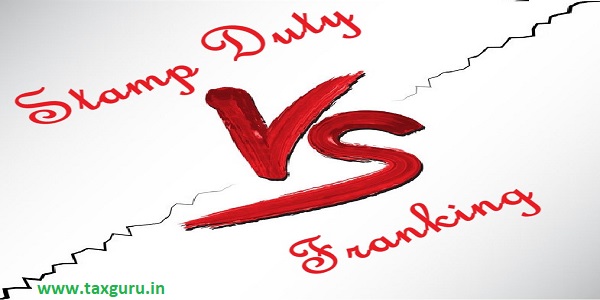Stamping and Franking are two widely misunderstood terminologies that require utmost clarification while dealing with documents and payable instruments. A stamp duty is the tax levied on legal documents commonly in the transfer of assets or property. In India, some of the contracts, real estate transactions, mortgage deeds etc. need to be stamped to make it legally valid. Franking, on the other hand, is the process to stamp property documents.
There are three ways to pay stamp duty: (1) Using the e-stamping facility (2) Using papers bearing impressed stamps (non-judicial stamp paper), and (3) Using a franking machine.
(1) E- STAMPING:
The central government has appointed the Stock Holding Corporation of India Limited (SHCIL) as the Central Record Keeping Agency (CRA) for all e-stamps used in the country i.e. www.shcilestamp.com.
SHCIL has facilitated e-stamping in Gujarat, Daman & Diu, Karnataka, Himachal Pradesh, NCT Delhi, Uttarakhand, Rajasthan, Tamil Nadu, Pondicherry, Assam, Uttar Pradesh, Chhattisgarh, Jharkhand and Jammu & Kashmir.
E-STAMPING ALTERNATIVE IN MAHARASHTRA
Electronic-stamping is not available in Maharashtra as the licence for SHCIL was not renewed by the state. Hence, since July 2013, the government has provided an alternative. You can pay stamp duty online via an electronic secured bank treasury receipt (eSBTR)-an online payment service. It is not an option in any other state.
You can log onto the website of the authorised bank, currently IDBI Bank, click the link for payment of stamp duty/registration fees. Enter the details and pay the duty through your Internet banking account.
You can get the eSBTR on giving a printout of proof of payment online at nominated branches of the bank. The eSBTR is a receipt of duty paid to the government. It is printed on secure stationery issued by banks.
(2) STAMP PAPER:
The most common way to pay stamp duty is by purchasing non judicial stamp paper from a licensed vendor. Then, either the details of the transaction is written on the paper or a blank stamp paper is affixed to the agreement documents and signed by the executants, indicating that the stamp paper is an integral part of the documentation. But it has its own Disadvantages.
(3) FRANKING:
For Franking, submit an application at an authorised bank or a franking agency. The document for which stamp duty is to be paid is printed on plain paper (before the parties sign it) and a stamp is affixed on the paper indicating the value of the stamp duty paid.
The primary drawback is that franking machines are not available at all bank branches and there are no uniform rules for authorised franking agencies. This could vary in rules among states and even among banks within a state.
Also, each bank has a franking quota. This means that if the denomination you need is higher than the bank’s quota, the bank should be informed sufficiently early to conclude the transaction.
Finally, do remember that in certain states, such as in Maharashtra, all stamps, however purchased, will be rendered invalid if not used within six months from the date of purchase.




